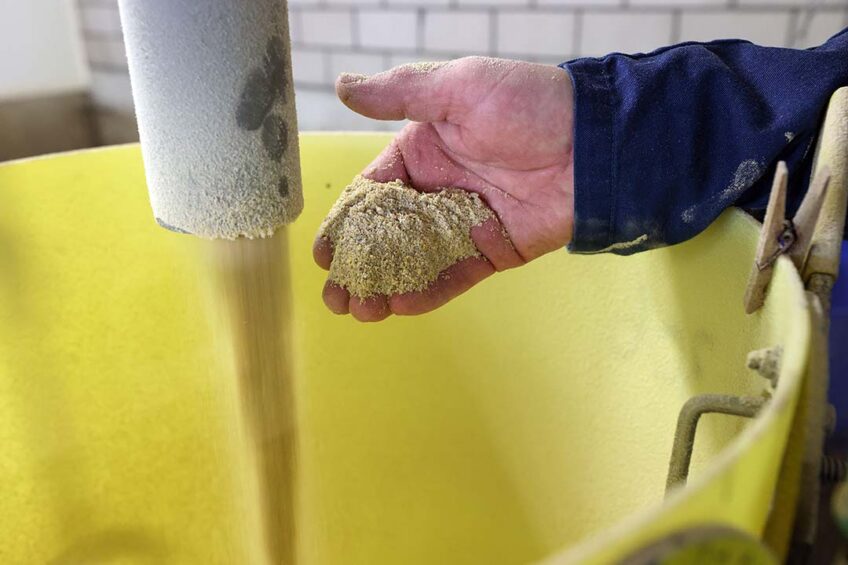The impact of grinding technology on pig diets

Grinding is a feed technology, used to reduce the particle size of a feed ingredient. What type of grinding technology to choose depends on the goal: all grinding choices have an impact, for instance on nutritional value, digestibility and feed use by pigs.
Grinding is performed using different types of mills including roller mills and hammer mills. Roller mills improve energy efficiency and provide a more uniform particle size, but a hammer mill system can be installed for about 50% of the cost of a roller mill. Therefore, the preference for using roller mills or hammer mills is often based on the required grinding capacity, electricity efficiency and types of feedstuffs. A more uniform particle size distribution results in greater digestibility of dry matter, gross energy and nitrogen.
Recent advancements in milling technology have created a multiple stage grinding system where ingredients are first rolled into one to three sets of rollers and then processed in a hammer mill to create a more uniform particle size and lower electricity use and cost of grinding.
Impact of grinding feed on digestibility
Grinding can have different effects on the digestibility of nutrients:
A reduction in wheat particle size increases the apparent total tract digestibility (ATTD) of starch;
With pigs fed a barley-field pea diet with reduced particle size there is an increase in gross energy, dry matter, and crude protein digestibility;
Reducing the particle size of lupins increases ATTD of gross energy and crude protein and the standardised ileal digestibility of amino acids;
When pigs are fed ground distiller’s dried grains with solubles (DDGS) there is increased ATTD of dry matter, gross energy and concentration of metabolisable energy;
Reducing particle size of maize increases the rate of phytate degradation and the ATTD of dry matter, nitrogen and gross energy;
Reducing particle size of sorghum improves the ATTD of gross energy and ether extract; and
Reducing the particle size of soybean meal increases the standardised ileal digestibility (SID) of isoleucine, methionine, phenylalanine and valine.
Impact on growth performance
Reducing cereal grain particle size enhances enzyme surface action, increases energy and nutrient digestibility, thus improving growth performance. A study showed that feeding weanling pigs and finishing pigs ground wheat improves feed intake but has no impact on overall gain-to-feed.
On the other hand, pigs fed maize ground to 400 rather than 1,000 μm had reduced average daily feed intake and increased gain-to-feed ratio due to the greater energy value in maize ground to a smaller particle size. For each 100 microns decrease in the particle size of maize, the gain-to-feed ratio in growing pigs improves by 1.3%. In addition, increasing the particle size of maize results in a decrease in the average daily feed intake of sows and a decrease in litter bodyweight gain.
Reducing particle size does not have the same effect among all cereal grains. The growth performance of pigs fed soybean meal with reduced particle size is not affected due to the low inclusion rate. Therefore, it is important to consider that the effect of reduced particle size may only be measurable if there is a high inclusion rate of the ingredient in the diet.
Impact of grinding feed on carcass traits
For pigs fed maize and sorghum with reduced particle size there is an increase in the carcass dressing percentage. However, feeding pigs wheat with reduced particle size has no effect on the carcass dressing percentage. Thus it appears that the positive effect of smaller particle size on dressing percentage that is observed for maize and sorghum, may not be seen for other cereal grains.











